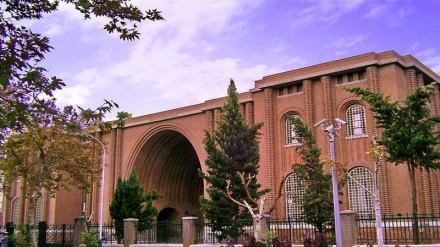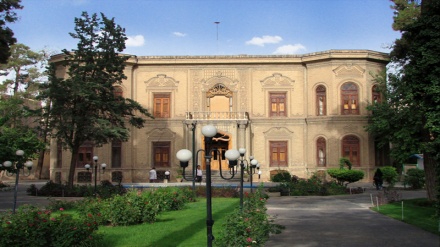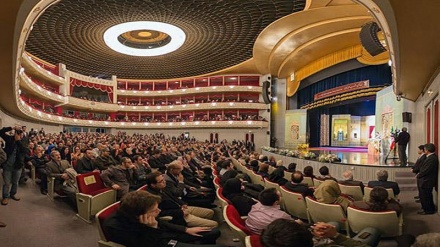Iran Your Attractive Destination (206)
Welcome to the 206th weekly episode of the series ‘Iran Your Attractive Destination’. Today, we introduce the city of Firouzkouh.
An ancient, historical land nestles on the foothills of Alborz Mountain Range. This ancient land is home to several eye-catching hills, fresh springs, beautiful plains and rocks, which capture the attention of every newcomer. In the previous episodes we became familiar with the cities of Tehran Province. Today, we get to know the city of Firouzkouh, which is host to thousands of tourists in the summer season.
Given the mountainous geographical position of the city of Firouzkouh, this city has a long cold season and a cold climate. This city is located at an altitude of 2147 meters above the sea level, and maintains a diverse climate and a diverse range of flora.
In the city, one can witness the permanently snow-tipped altitudes and a relatively warm climate in the summer season. Appropriate rainfall, permanent glaciers, and a large number of springs have led to creation of several rivers and creeks across this region, while ample water sources have shaped ever-green locations, throughout this city.
Firouzkouhroud River is considered to be the lifeline of this city. This river originates from Shahmirzad Mountains. Next to the existing rivers in this region, there are a number of mineral water springs which are fresh and pristine, and have remedial effects. These springs are host to scores of tourists, who travel to this region for treatment of rheumatism, kidney stones, and skin diseases. Several villages have been shaped next to these springs.
Among the beautiful villages of the city of Firouzkouh, one can refer to Waraskharan and Arjomand. The villages which are located on the banks of Firouzkouhroud River maintain an intact and astonishing nature. The village of Simindasht, is the last rural region on the banks of this river, which enjoys a moderate climate in the summer season and is en route the summer and winter quarters of regional nomads. The nomads migrate to Firouzkouh in the summer season. Meanwhile, animal husbandry and agriculture are the economic mainstays in the regional villages. Firouzkouh is home to countless meadows. The ample rain and snowfall and appropriate climate have led to formation of fertile farmlands in this region. Meanwhile, the marshlands and natural green areas within valleys and/or next to rivers and creeks have turned this region into a popular tourist destination.
Several orchards and farmlands are located next to Firouzkouhroud River due to presence of ample water sources. Moreover, medical herbs and traditional plants grow in this region.
Firouzkouh is en route Tehran-Gorgan Railroad. This railroad has in turn led to development of horticulture and agriculture in the region. This is because thanks to this railway, farmers easily deliver their products to the consuming markets. The apricot, walnut, pear, sour cherry, cherry, green gage, mulberry, peach, grape, almond, and apple trees bear fruits in this region, within appropriate seasons.
One of the main routes which link Tehran to northern Iran is Firouzkouh Road. According to ancient writings, Firouzkouh has always been the scene of battles between the rulers and rebels throughout the course of history.
The city of Firouzkouh is at a 135-kilometer distance from Tehran and a 90-kilometer distance from the city of Damavand, and is situated next to the remains of the well-known Firouzkouh Castle.
The Historian, Hamdollah Mostofi, notes that the city of Firouzkouh had four gateways. Overall, based on historical narrations, the city of Firouzkouh existed prior to 5th Century AH.
Today, upon the construction of new roads, which have replaced the ancient roads, the city of Firouzkouh has experienced significant progress.
It is interesting to know that several historical monuments are located in different districts of the city of Firouzkouh; some of which display the age-old and historical identity of this region. Some of the most beautiful historical works of this region are a number of engraved inscriptions situated in a gorge, referred to as Waashi Gorge, in the northwestern corner of Firouzkouh. These engravings are located on rocks, looming over the river, and display a number of topics, such as hunting sites, and hunting tools. These engravings are located at an altitude of two or three meters above water, and belong to Qajarid era.
There are also scenic landscapes across this region. There are several caves in the mountainous regions of Firouzkouh, including Roodafshan
Cave, in the vicinity of Roodafshan Village. This cave is situated en route the path of mountaineers, which aim to ascend pinnacles across the region. One of the important features of this cave is the huge temperature difference in and out of this cave in the summer season. In fact, in mid-summer season, this cave remains chilly. The ceiling of this cave is covered with lime stones which are hanging in the form of icicles; the height of some of which is twenty meters. It is noteworthy that some of the exits of this cave remain unknown.
One of the other tourist attraction sites of Firouzkouh is Gadook Canyon, which mostly remains foggy throughout the year. The sudden climate change cannot be predicted. Meanwhile, one side of this canyon is mountainous, with a moderate climate, while at lower altitudes, there are green landscapes and citrus fruit orchards. This canyon is a top destination for eco-tourists.
MR/ME


